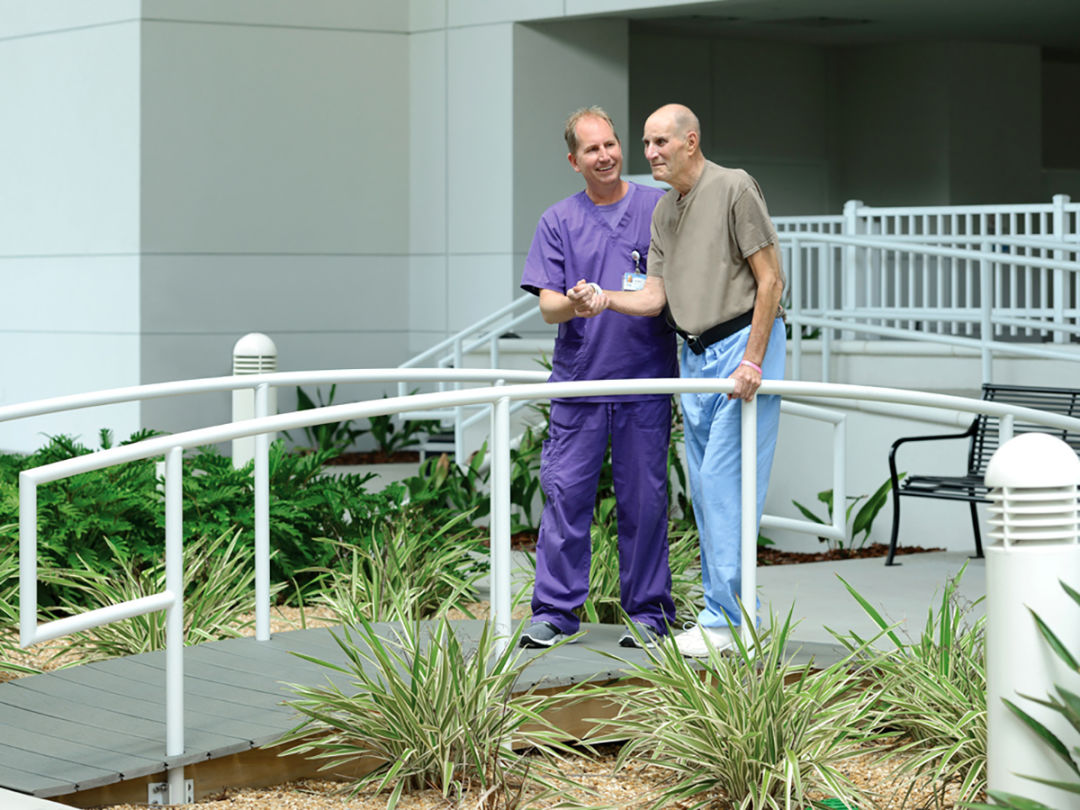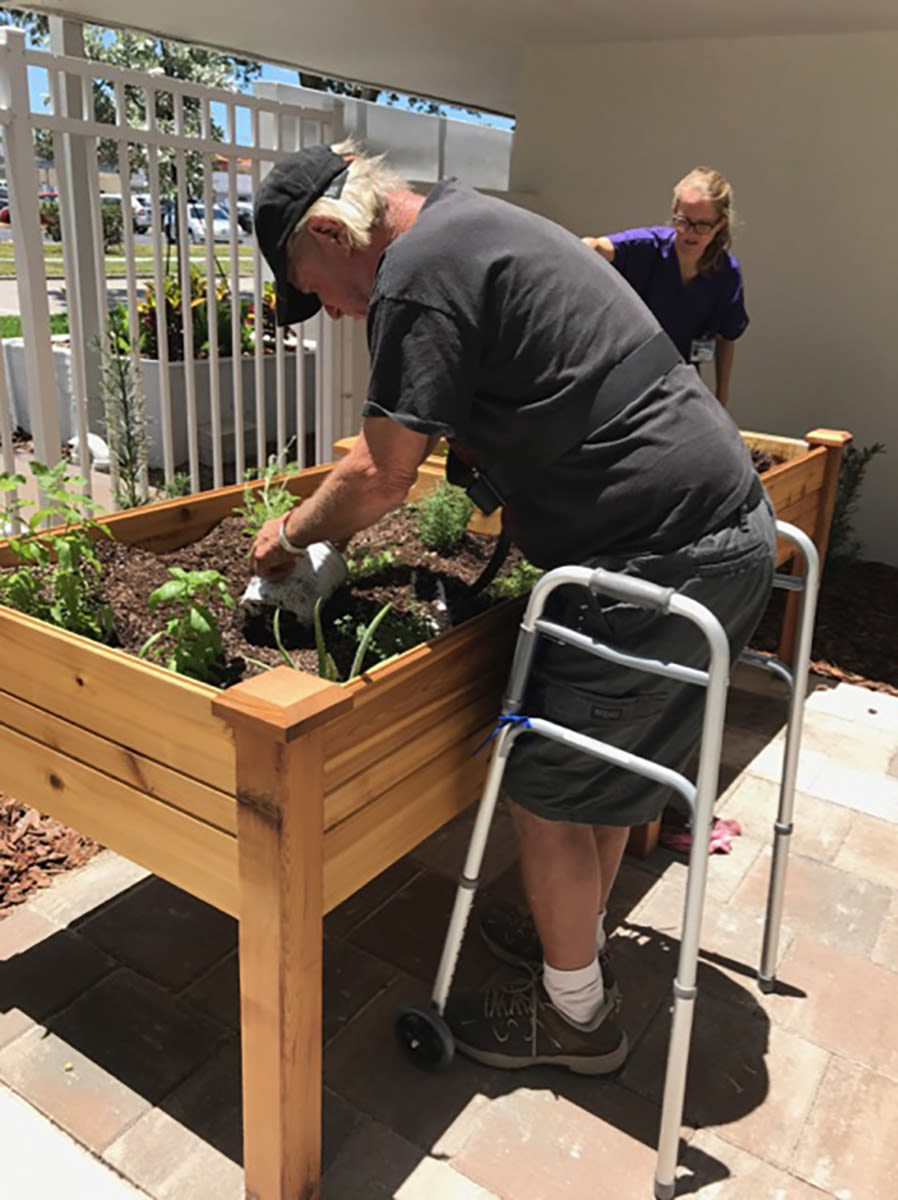Stroke Rehab You Can Dig
Imagine you’re strolling through a green garden, breathing in the fresh air, feeling the sun on your face and the breeze on your cheeks. As you stop to touch the soft petals of a rose, you see a colorful butterfly hopping from flower to flower, finally landing on a thirsty plant that needs your attention. You reach out with your watering can, as far as your arm can stretch, and sprinkle water around the plant before moving on to another that needs tending. You spot another garden visitor, smile, and call out a greeting.
For most, this sounds like a leisurely afternoon spent enjoying nature. But for Sarasota Memorial stroke rehabilitation patients, it’s a typical therapy session in the Rehab Pavilion’s Mobility Garden—a unique space that allows stroke survivors and others to practice everyday tasks by doing things they enjoy, like gardening or swinging a golf club.

At Sarasota Memorial’s Mobility Garden, stroke survivors enjoy walks, gardening and golf while recovering, so they can get back to enjoying their favorite activities on their own.
FUNctional Stroke Recovery
According to the American Stroke Association, 795,000 people in the US are affected by stroke each year and one in every four will have a second stroke in their lifetime.
Muscle loss can begin in as little as four hours after a stroke, making it imperative that stroke survivors begin the recovery process as soon as possible.
Physical activity improves strength, balance, endurance and overall brain health. It also reduces the risk of depression and anxiety. For stroke patients, it can mean the difference between eventual independence and not being able to care for yourself or move around safely.
At Sarasota Memorial, customized treatment plans not only reduce the impact of stroke-induced disability, but also improve quality of life. Rehabilitation therapy should always be both functional and fun, and be driven by the patient’s needs and personal goals. Stroke survivors’ hobbies and interests play a vital role in motivating them to face new challenges and to push toward recovery so they can get back to enjoying their favorite activities on their own.

At first glance, it might appear patients are enjoying some leisure time in the Mobility Garden, but they are actually working hard to relearn motor and cognitive skills — in a way they really dig.
The Mobility Garden: A Healing Space
The Rehab Pavilion’s Mobility Garden is one of the many unique, therapeutic and intentionally designed healing spaces on the Sarasota Memorial Hospital campus. The accessible green space provides patients a place to safely interact with the outdoors during their hospital stay. A meandering path is accessible to all types of mobility aids (wheelchairs, walkers, canes, etc.), with a variety of outdoor surfaces (grass, gravel, cobblestone, curbs and wood bridges) allowing visitors to practice getting around in the real world.
The Mobility Garden is used for several therapeutic activities including gardening, walking, bird watching, sensory stimulation, or simply a place to relax and enjoy nature. There’s also a putting green for avid golfers to relearn swinging a golf club. On any given day, you may spot Rehab patients and therapists seemingly enjoying some leisure time outside. But in actuality, those patients are working hard to relearn motor, sensory and cognitive skills — in a fun yet functional way. Skills learned in the Mobility Garden promote physical and mental health in stroke survivors.
Practicing real-life skills in a relaxed, fun way can look like:
- Walking with a walker or pushing a wheelchair through the garden to strengthen arms and legs or to improve balance.
- Reaching and bending to water or prune flowers, practicing the same movements required for bathing and dressing.
- Carrying on a focused conversation in a visually stimulating environment with a speech pathologist during cognitive and communication treatments.
- Taking a stroll to decrease stress and over stimulation, common byproducts of adapting to a new disability and being in a new environment.
The Mobility Garden at the Rehabilitation Pavilion is just one healing space where therapists use meaningful leisure skills to motivate physical activity during the recovery process. Each stroke survivor is unique and has a multitude of hobbies, interests and goals that give them the drive they need to make the most out of their rehabilitation journey. The most important ingredient in a successful recovery is staying active, so you can continue to do the things that bring you enjoyment.